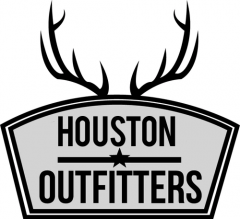Determining the Best Bore for Your Hunting
Matching the gauge to your hunting needs is perhaps the single most important decision when buying your first shotgun, but it really comes down to a few basic questions.
As with other variables like the type of action, barrel length, stock material, or chambering, choosing the gauge of shotgun best suited for your style of hunting is mostly a matter of asking yourself how you intend to use it.
What Does Shotgun Gauge Mean?
The gauge assigned to a shotgun depends on the bore or the inside diameter of the barrel. It is expressed as the number of round balls of that diameter it would take to make one pound of lead. For example, with a 12 gauge shotgun, it would take 12 round lead balls the size of the bore to make a pound. With a 28 gauge shotgun, it would take 28 lead balls to make a pound.
The most common shotgun gauges are 10, 12, 16, 20, and 28. One size smaller than the 28 gauge is the .410, which is not truly a gauge at all but rather a caliber. The barrel diameter of a .410 is 41 hundredths of an inch. If it were expressed in terms of gauge, the .410 would be roughly a 67.5 gauge.
What Shotgun Gauge is Best for Which Game?
The 10 gauge shotgun is almost exclusively used in goose hunting. It is a heavy gun with a significant “kick” or felt recoil upon firing. For these reasons, and because many 12 gauge shotguns also make excellent goose guns, the 10 gauge is generally not a good choice for a first shotgun.
At the other end of the scale, the .410 is very light and has little felt recoil, and is in some ways a perfect “starter gun”. Many of those hunting today started out with a .410, and it makes a fine gun for small game such as grouse and rabbit. However, since hunters who start with these species often graduate to larger game, it is easy to outgrow this gun. There are much better options for larger animals, and some jurisdictions prohibit using a .410 for anything but small game.
The 16 and 28 gauge shotguns have an inherent problem in that they are not common enough for the ammunition to be commonly available. While most sporting goods stores carry some 16 and 28 gauge ammunition, a gun owner who runs out of shotshells while hunting in a remote rural area might have a difficult time finding these gauges. In addition, the 28 gauge is somewhat light for hunting anything other than small and upland game, although it is quite popular among skeet shooters.
The 12 gauge shotgun is perhaps the most versatile firearm available. It can be used with birdshot and 2-3/4-inch shells to hunt for small and upland game. It can be used with 3-inch or magnum 3.5-inch shells to hunt turkeys or waterfowl. It can be used with slugs or sabots to hunt big game out to 100 yards or better. Ammunition is comparatively cheap and readily available. However, it is heavier than most other gauges, and there is the issue of felt recoil, especially with the larger shells and more powerful loads.
The 20 gauge is the second most popular kind of shotgun and is also an excellent all-around gun. It is generally lighter than the 12 gauge, has less kick, and the ammunition is also widely available. While it might not be as suitable for hunting waterfowl or for the largest of game, it is in most respects as versatile as its larger cousin.
For hunters with specialized needs such as long-range shots for geese or varmint control on the farm, there are niche shotguns well suited to each of these tasks. However, for a multi-purpose gun suitable for a wide variety of games, the 12 gauge and 20 gauge are by far the most popular choices. The 12 gauge has long been the top seller by a wide margin due to its incredible versatility and effectiveness with larger games, but the 20 gauge has found a legion of devotees thanks to its reduced carry weight and recoil.
